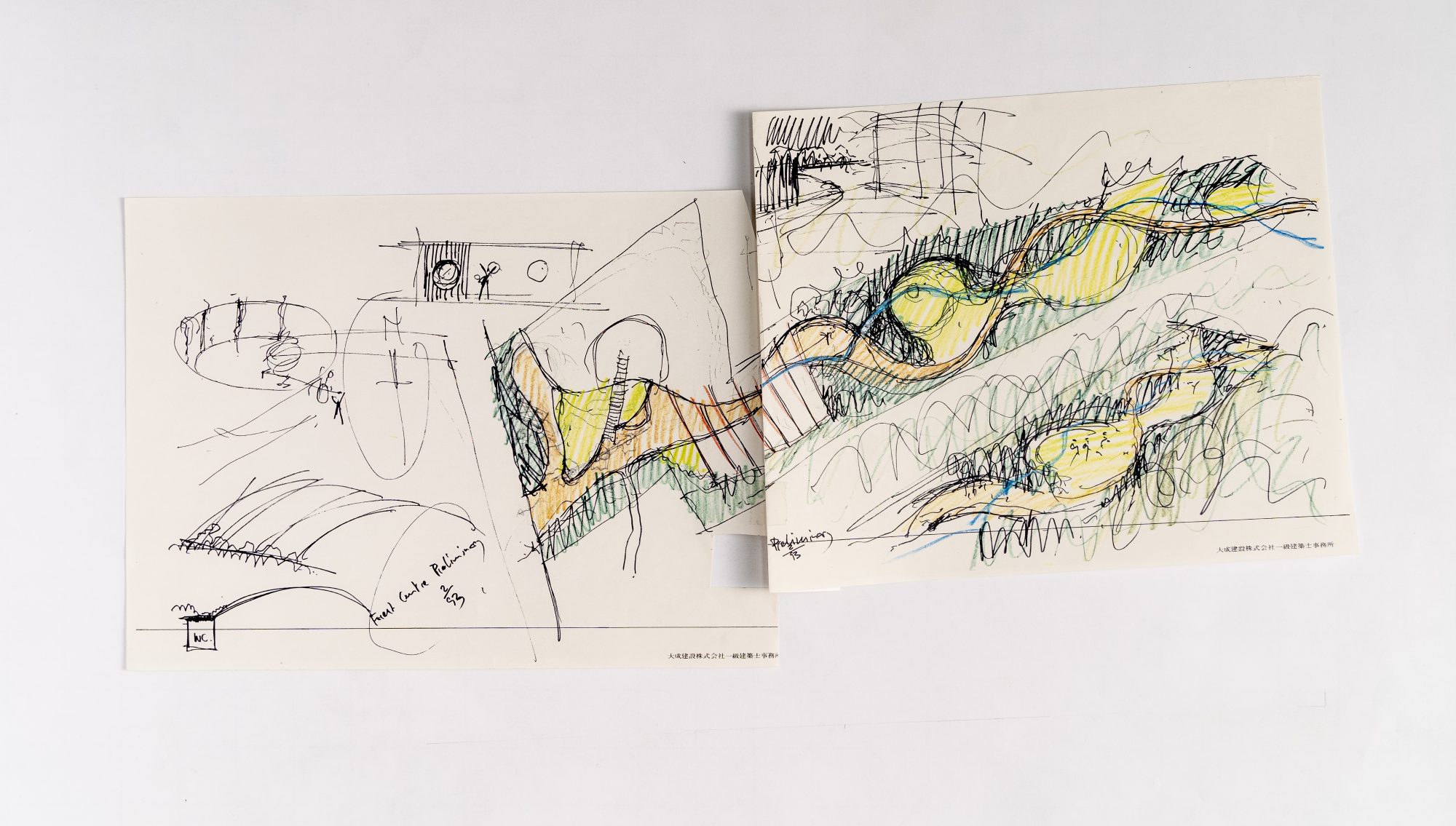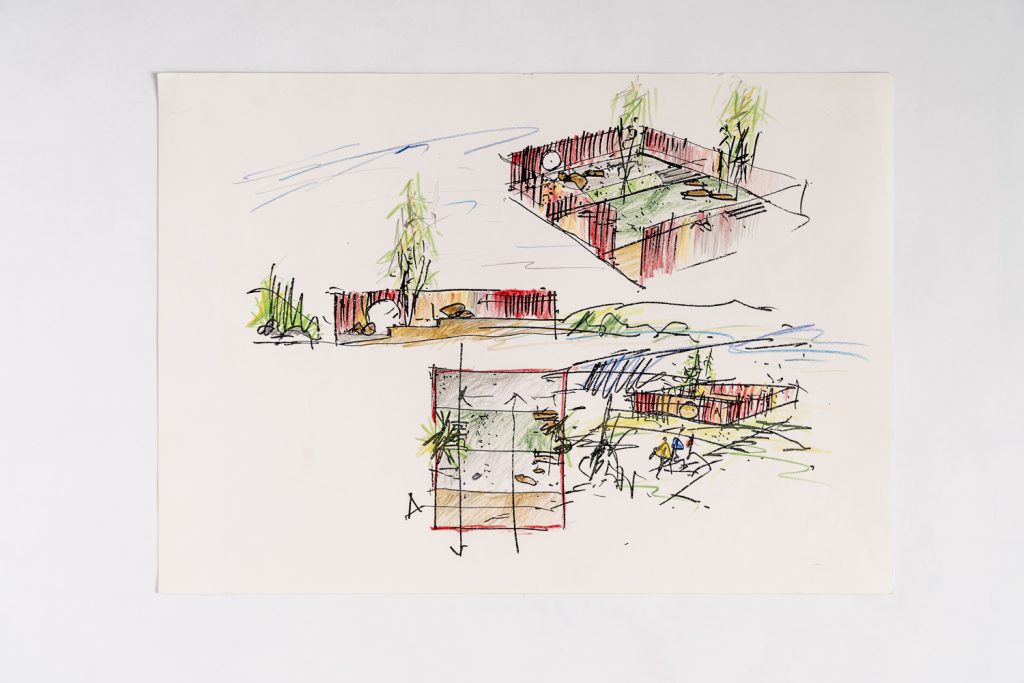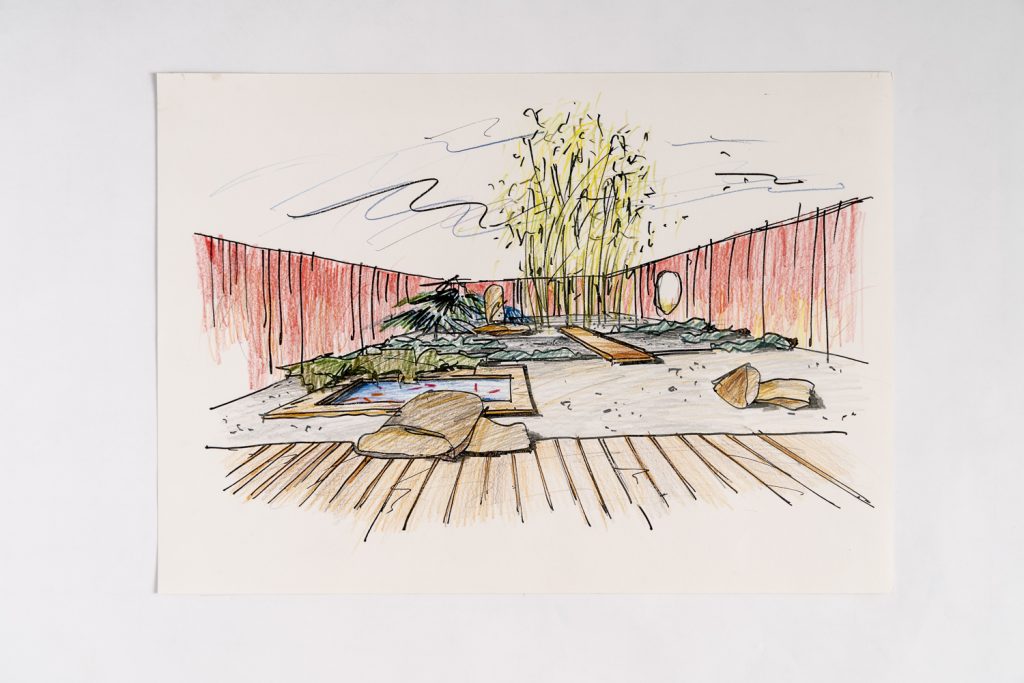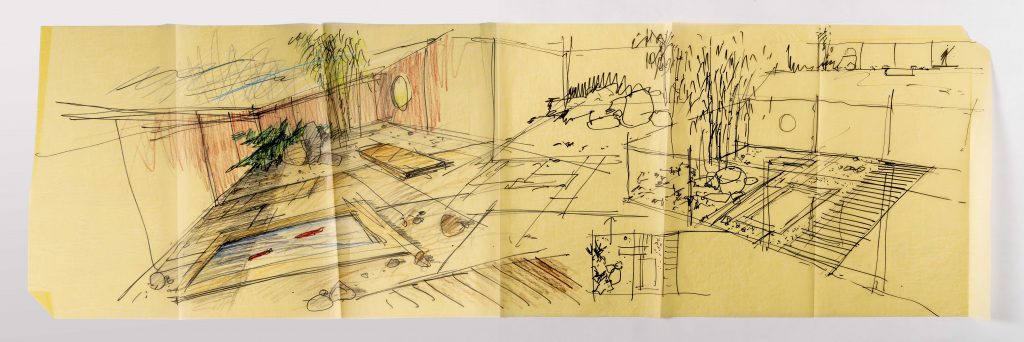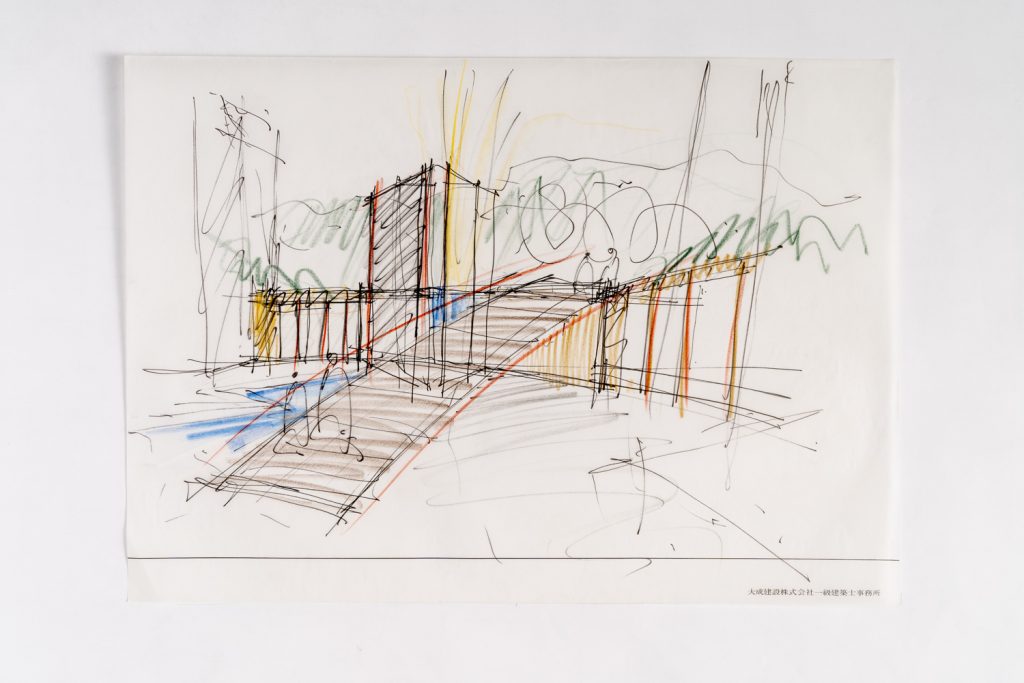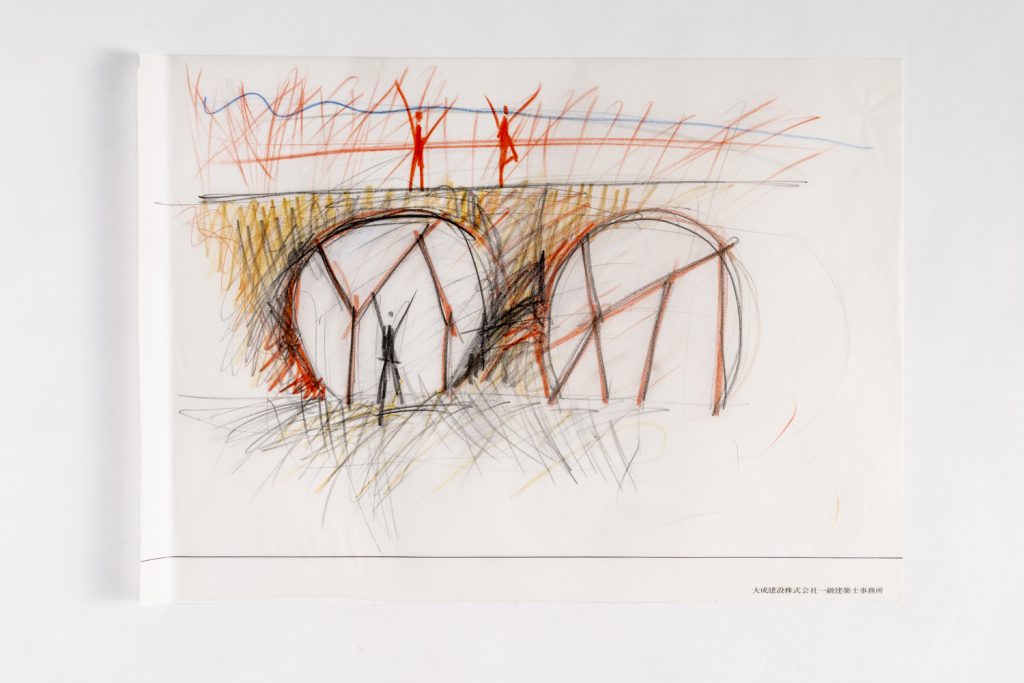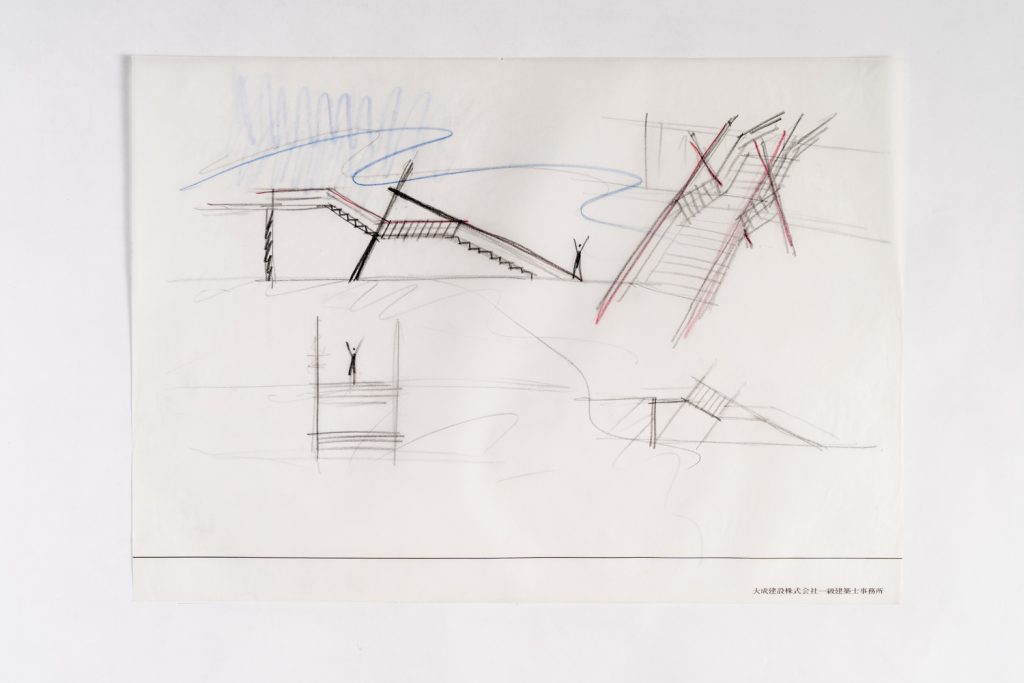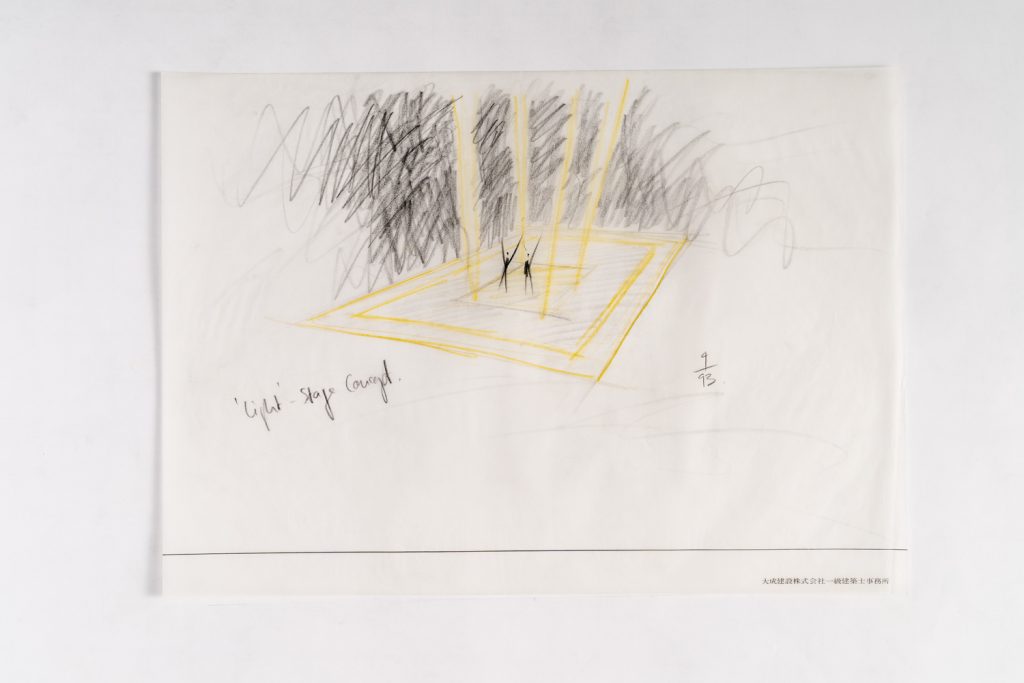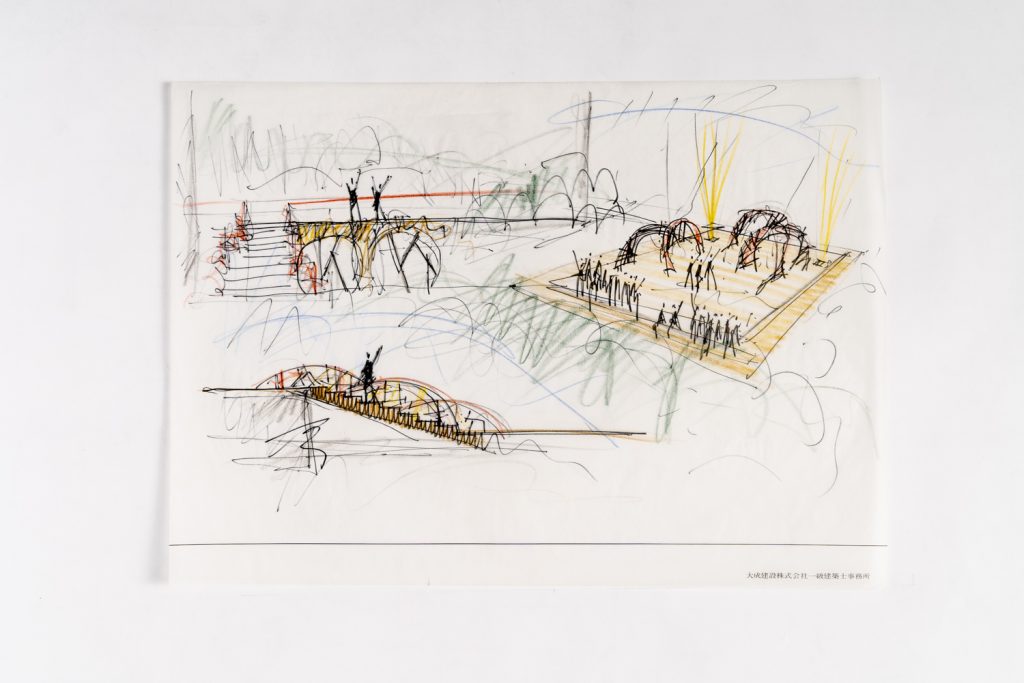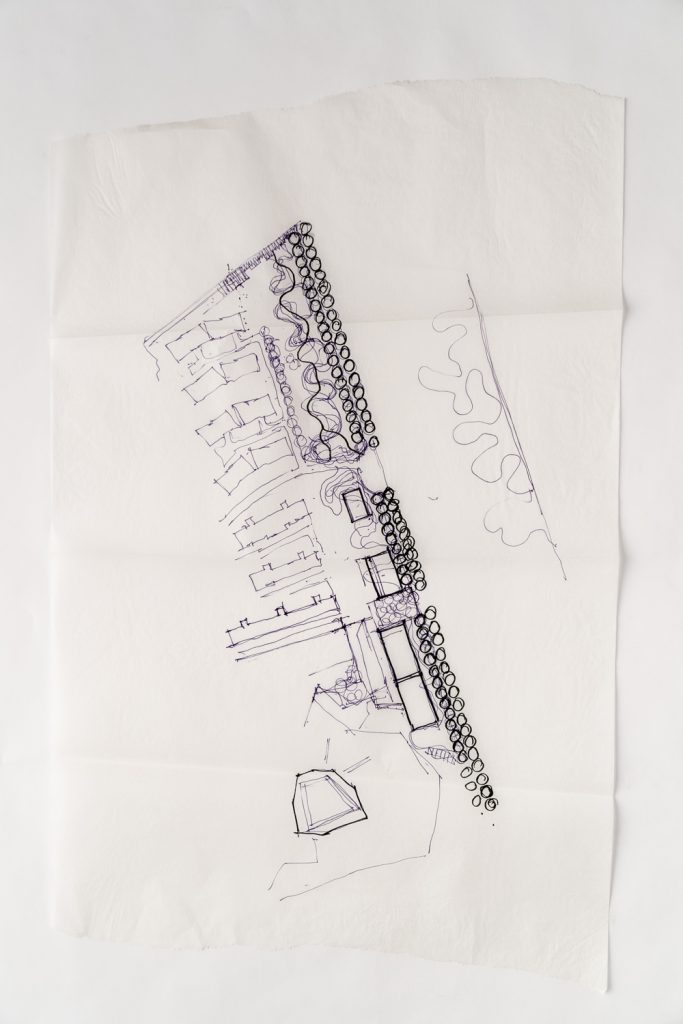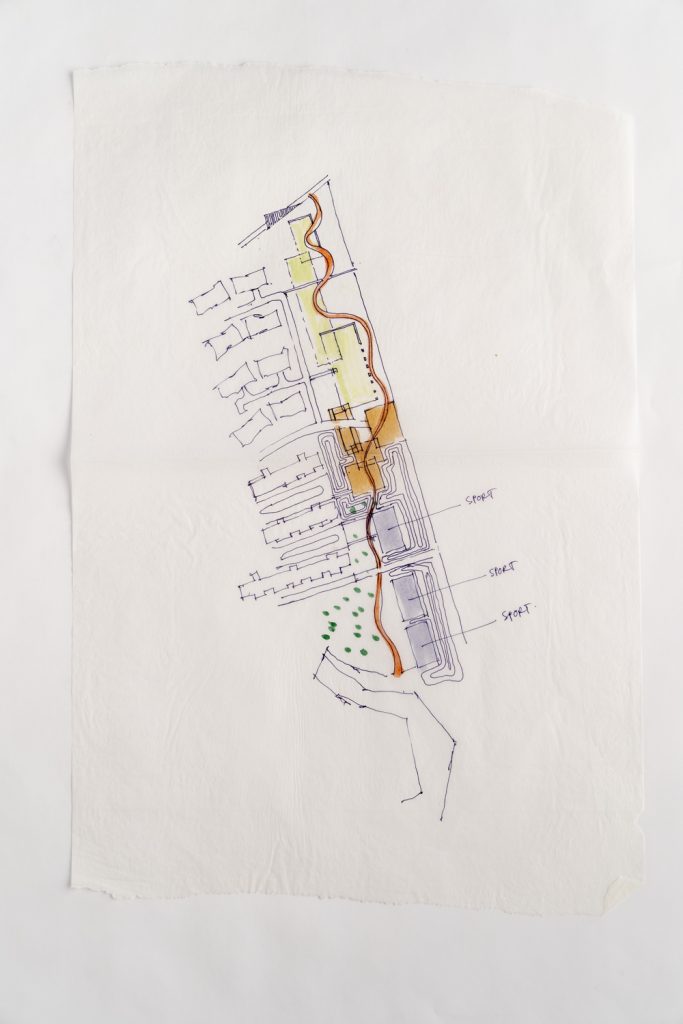Eye-level and aerial perspectives are useful tools to develop and check spatial experience. The aerial perceptive is used to develop and visualize the spatial program while the eye-level perspective is useful to design the experience in the space. Materiality, colours, textures and human scale, for example, in relation to context can be explored. Aerial perspectives are not useful to explore human scale, as its more a bird’s experience, then a human one. They are however, useful to show the design in its surrounding context. Eye-level views on the other hand are a more realistic tool to design the spatial experience. It is also useful to show the whole design process in sequence in the concept phase as it will help developing and editing ideas and explain the design process to a client.
Often Too Serious
I often talk about being ‘loose’ in drawing to our students. I say this, when I notice a student executing a drawing focuses too much on graphic representation first than content or if a student is afraid drawing as she/he might feel their drawing skills are not sufficient. This is never the case as design ideas can be expressed freely and should adhere to only one very important rule… “human scale”. It is therefore important to place people into the spaces one creates. This should happen in orthographic drawings (plan, section, elevation, axo) and perspectival views. Very important is to draw many ideas at eye-level to visualize the spaces one is creating. Today students are occupied too much understanding the complex modelling and rendering tools first instead of focusing on creating ideas. Hand drawings are a fast alternative to learn and explore communicating ideas and can be practiced anywhere right away, even on the first day in design school.
Design Process Documentation/Presentation
Documentation and presentation of the design process is not only important during education, it is also a very useful tool in design presentation. Hand drawings document the design process fast on tracing paper or a tablet and both have overlay tracing capability. In design studio empathizes should be given more on hand drawing again! Balancing ‘off screen’ to ‘on screen’ creates a healthier studio environment, design atmosphere and allows students to work at many scale without constant zooming in and out on the screen. The physical process of drawing is therapeutic and nurtures the brain and body.
